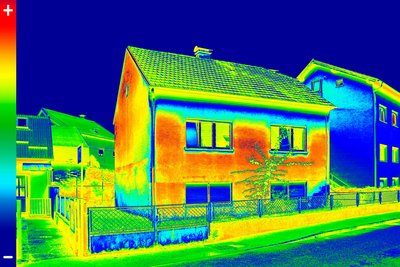New energy for old buildings
Build, operate, demolish: buildings account for forty percent of global CO2 emissions. Alina Galimshina and Flurina Gradin from the “Renovating buildings, yes! But how?” research project know how to renovate in an environmentally friendly and efficient way — and now want to persuade the building industry to adopt their approach.
Tessa Apitz: What is the aim of your project?
Flurina Gradin: The project draws on the results of a research project funded by the Swiss National Science Foundation (SNSF) and dedicated to establishing how buildings can be renovated in a robust way. Our current work strives to disseminate these results to the key actors in the building sector: architects and engineers, organizations (e.g. Swiss Association of Engineers and Architects, Minergie Association), the Swiss Federal Office of Energy and the city of Zurich. We want decision-makers to understand that Switzerland needs to embrace change towards low-carbon and climate-proof buildings.
What are your main findings and what might concrete solutions look like?
Alina Galimshina: Current and common renovation practices are neither optimal nor robust, nor cost-efficient and climate-friendly. Heating systems are the most influential parameter and must be considered first. Further, to protect buildings from increasingly likely overheating in the summer months, much smaller quantities of conventional insulation materials than are currently used are sufficient. Bio-based materials require the largest possible amount of insulation material. Such materials have a low CO2 footprint and positively affect indoor comfort. In sum, three steps are needed to reduce carbon emissions: first, saving energy through individual measures; second, replacing fossil fuels with low-carbon alternatives; and third, thermal insulation through biobased materials.
What is the biggest challenge for your project?
Flurina Gradin: Our results show that a definite rethink is needed. Which renovation solutions are chosen massively impacts the economy, the environment and the indoor comfort of Swiss buildings. The topic is complex, as several methods are combined and many stakeholders are involved. Our main challenge is to convey our findings to stakeholders in the building industry clearly and comprehensively and thus to encourage them to adopt low-carbon renovation methods. We intend to develop specific discussion and interaction platforms for the different stakeholders. To succeed, the core message must fit the prior knowledge and interests of the target groups and, of course, the type of adoptable measures.
Alina, you are based at the Chair of Sustainable Construction at ETH. What is your role in the project?
Alina Galimshina: For the research project, we have identified the parameters that influence the results of the environmental impact and economical costs of building renovation. On the one hand, these are the renovation decisions taken by planners. On the other, the parameters, which may significantly impact the analysis but cannot be influenced by planners. These include social and economic factors, such as the climate, human behaviour and the future development of energy costs. How buildings are used also greatly influences their overall environmental impact.
Flurina, what role does design play in this project?
Flurina Gradin: I am motivated by the opportunity to collaborate in a transdisciplinary team. On-day’s challenges. Design can contribute to the project’s success in various ways: through education and knowledge transfer, through co-design processes or through evaluating relevant focal points and their sensualization or aestheticization. The building sector is often about money, facts and figures. While this enables decision-making, the fact that the debate on energy-efficient building is also strongly culturally determined is neglected. Moreover, only visionary or experimental approaches and objectives can initiate a paradigm shift. And finally, that political opinion-forming only becomes possible through experience and exchange. Design plays a relevant role in all these fields.
Flurina Gradin teaches in the Bachelor in Design and conducts research at the ZHdK Institute for Design Research. She is a designer and specialist in urban ecology.
Dr. Alina Galimshina is based at the Chair of Sustainable Construction in the Department of Civil, Environmental and Geomatic Engineering at the ETH Zurich.
